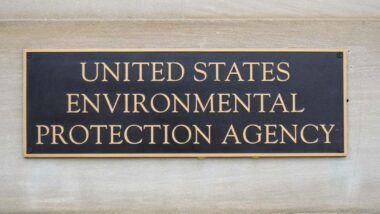Top Class Actions’s website and social media posts use affiliate links. If you make a purchase using such links, we may receive a commission, but it will not result in any additional charges to you. Please review our Affiliate Link Disclosure for more information.

In March 2016, the New England Journal of Medicine published an article titled “N-of-1 Policymaking — Tragedy, Trade-offs, and the Demise of Morcellation.”
Author Dr. Lisa Rosenbaum implied that FDA was prompted to discourage the use of power morcellation surgery based solely on one patient.
Rosenbaum also wrote that the nation’s public health campaign against power morcellators was being instigated by “availability entrepreneurs” based on this “emotional N-of-1.”
However, despite Rosenbaum’s perspective, many in the medical community, press, and public agree that the FDA’s Center for Devices and Radiological Health (CDRH) continues to make unsafe public policy decisions using “Ns-of-1,” based on experts who may have a financial interest in the products they develop.
One such example may be the Agency’s recent approval of a containment system for use during power morcellation surgery called a “Pneumoliner.”
This new device is theoretically designed to limit the dissemination of morcellated bits of uterine tissue when the surgeon uses a power morcellator to mince up the uterus.
PneumoLiner and Power Morcellation Surgery
The FDA in April announced the approval of the first tissue-containment bag for use with a gynecological surgical device that can spread undetected cancer.
At the same time, the agency continued to warn that the tissue-slicing surgical device, called a power morcellator, should not be used in most cases. The FDA further warned that the new bag “has not been proved to reduce the risk of spreading cancer.”
The FDA estimates that about 1 in 350 women who undergo hysterectomy or uterine fibroid removal will have an unsuspected sarcoma, an aggressive uterine cancer. If the surgery is done with a power morcellator, the procedure can spread the cancer and worsen the patient’s prognosis.
However, advocates against power morcellation surgery denounced the approval of the bag as “astonishing” and irresponsible, given that the FDA has not changed its position that power morcellation surgery poses serious risks.
About the PneumoLiner
Introduced in 1993, electric morcellators have motorized blades that dissect tissue so it can be removed through tiny abdominal incisions. Patients recover faster than with the traditional cut-open-the-abdomen hysterectomy.
About 50,000 hysterectomies a year involved the device before the controversy erupted a couple of years ago, sharply lessening its use.
The FDA now says power morcellation surgery should be done only in relatively rare cases, such as some pre-menopausal women who want to get rid of fibroids but preserve their fertility by leaving the uterus intact.
“PneumoLiner is intended to contain morcellated tissue in the very limited patient population for whom power morcellation may be an appropriate therapeutic option – and only if patients have been appropriately informed of the risks,” the FDA stated in a news release.
PneumoLiner is made by Advanced Surgical Concepts Ltd. of Bray, Ireland. The FDA said the product was reviewed under regulations for “low- to moderate-risk devices that are first-of-a-kind.”
The labeling for PneumoLiner will include a prominent warning that “the use of this containment system has not been clinically demonstrated to reduce the risk” of spreading an unsuspected uterine cancer.
However, this may not be enough to reduce or eliminate the cancer risks associated with power morcellation surgery.
Just this past week, the Philadelphia Inquirer filed a “Citizen Petition” to FDA commissioner Dr. Robert Califf, questioning the PneumoLiner’s safety in preventing morcellation cancer and requested that the FDA take a proactive approach in further determining the safety of the PneumoLiner for use in power morcellation surgery.
Do YOU have a legal claim? Fill out the form on this page now for a free, immediate, and confidential case evaluation. The morcellation cancer attorneys who work with Top Class Actions will contact you if you qualify to let you know if an individual lawsuit or class action lawsuit is best for you. [In general, morcellator cancer lawsuits are filed individually by each plaintiff and are not class actions.] Hurry — statutes of limitations may apply.
ATTORNEY ADVERTISING
Top Class Actions is a Proud Member of the American Bar Association
LEGAL INFORMATION IS NOT LEGAL ADVICE
Top Class Actions Legal Statement
©2008 – 2024 Top Class Actions® LLC
Various Trademarks held by their respective owners
This website is not intended for viewing or usage by European Union citizens.
Get Help – It’s Free
Join a Free Morcellation Cancer Class Action Lawsuit Investigation
If you or a loved one were diagnosed with cancer in the uterus, pelvis or abdomen within two years of undergoing surgery for a myomectomy (removal of fibroids), hysterectomy (removal of the uterus), oophorectomy (removal of the ovaries), or salpingectomy (removal of fallopian tubes), you may have a legal claim. See if you qualify by filling out the short form below.
An attorney will contact you if you qualify to discuss the details of your potential case at no charge to you.
Please Note: If you want to participate in this investigation, it is imperative that you reply to the law firm if they call or email you. Failing to do so may result in you not getting signed up as a client, if you qualify, or getting you dropped as a client.
Oops! We could not locate your form.












